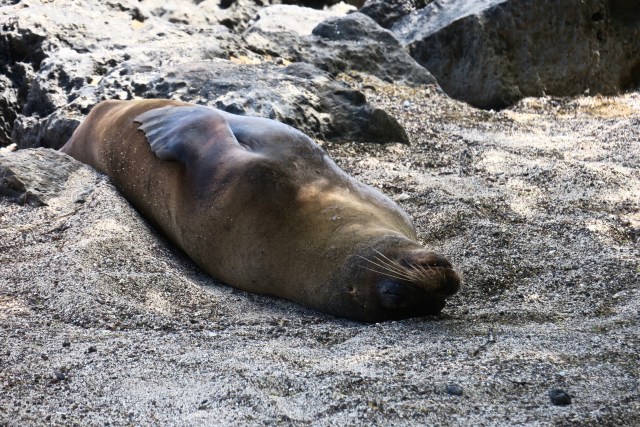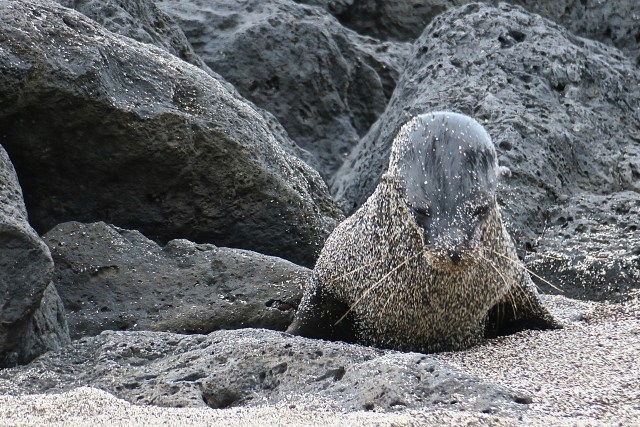There is always great anticipation before embarking on a new adventure, but my adrenaline was pumping overtime as I prepared for my trip to the Galápagos Islands. As a nature photographer, I could hardly contain my excitement at the prospect of capturing photos of animals seen nowhere else on the face of this earth. Add to this the anticipation that securing these pics might not involve going into stalker mode (see “cardinal“) as I had read that the animals of these enchanted islands had no fear of humans. I was not disappointed, although some of my encounters proved to be REALLY CLOSE – more on that in a later post.
After a relaxing day spent in Guayaquil, Ecuador, we met up with our guide Alfredo and the small group of fellow travelers at the airport – and ran smack into our first WTDGAP moment. Somehow my friend Lenore’s first and last names had gotten switched on the airline manifest and the agent could not issue her a ticket. What could have been a major glitch, however was settled quickly as the agent called ahead to the main desk to make the correction so fairly quickly the error was fixed and we were on our way, with a copy of the new manifest in hand to avoid the same problem on our way back.
Our first stop: San Cristobal Island, the easternmost of the Galapagos Island chain.
The Galápagos consists of thirteen major islands and hundreds of smaller rocky islands. A single volcano formed each island except for Isabela, which resulted from the union of six different volcanoes. More on Isabela in a later post. The creation of these islands is a fascinating story in itself – but my focus is on the animals.
Charles Darwin visited these isolated islands in 1835 and found a cornucopia of plant and animal species found nowhere else on earth. The uniqueness of the terrain and the diversity of plants and animals species helped Darwin formulate his theory of evolution.
At our hotel, the first of a handful of glorious, eco-friendly and gorgeous establishments, I met up with one of these marvelous species: the sea lion. These playful and intelligent creatures are well-named, not for their ferociousness or predatory abilities, although they are consummate hunters, but rather for their penchant for lying around.
This is one of my pics from Amboselli National Park in Kenya.
This little one did make an attempt to get up upon our arrival but it proved too much:
Though it isn’t necessary for sea lions to be camouflaged as they have no real predators on land it is remarkable how alike their coloring is to the surrounding lava rocks. A layer of sand often completes the look as you can see above.
Just a note: As with all large mammals a good six feet is required separation from us humans – these seemingly docile animals are swifter than imagined and can deliver a nasty bite if they feel their females or babies are at risk. So although I could have gotten closer I was happy to rely on my zoom lens for the close shots. It proved to be a good idea, for this bull sea lion was actively protecting his harem, not only from potential rivals but also humans who strayed too close:
Some other sea lions also noticed our arrival – this little cutie waddled up to stare:
Others appeared to be actually posing for me – craning their necks this way and that so I could get their best profiles:
However, I flatter myself. Most of these gyrations are done to relief neck pressure caused by their large amounts of blubber. Whatever the reason, I appreciated the poses – even from this lazy fellow who only managed a flipper “high-five:”
This gesture was repeated by a number of sea lions I “met” in the Galapagos, as you will see.
Next up: One of the most iconic animals of the Galapagos: Boobies!
#



























Glad everything got sorted out with Lenore 🙂 and beautiful pics (as always)… xx
You would have loved it Dom!
Amazing pictures of the sea lions! Thanks so much for sharing with us
Boobies????? Can’t wait!